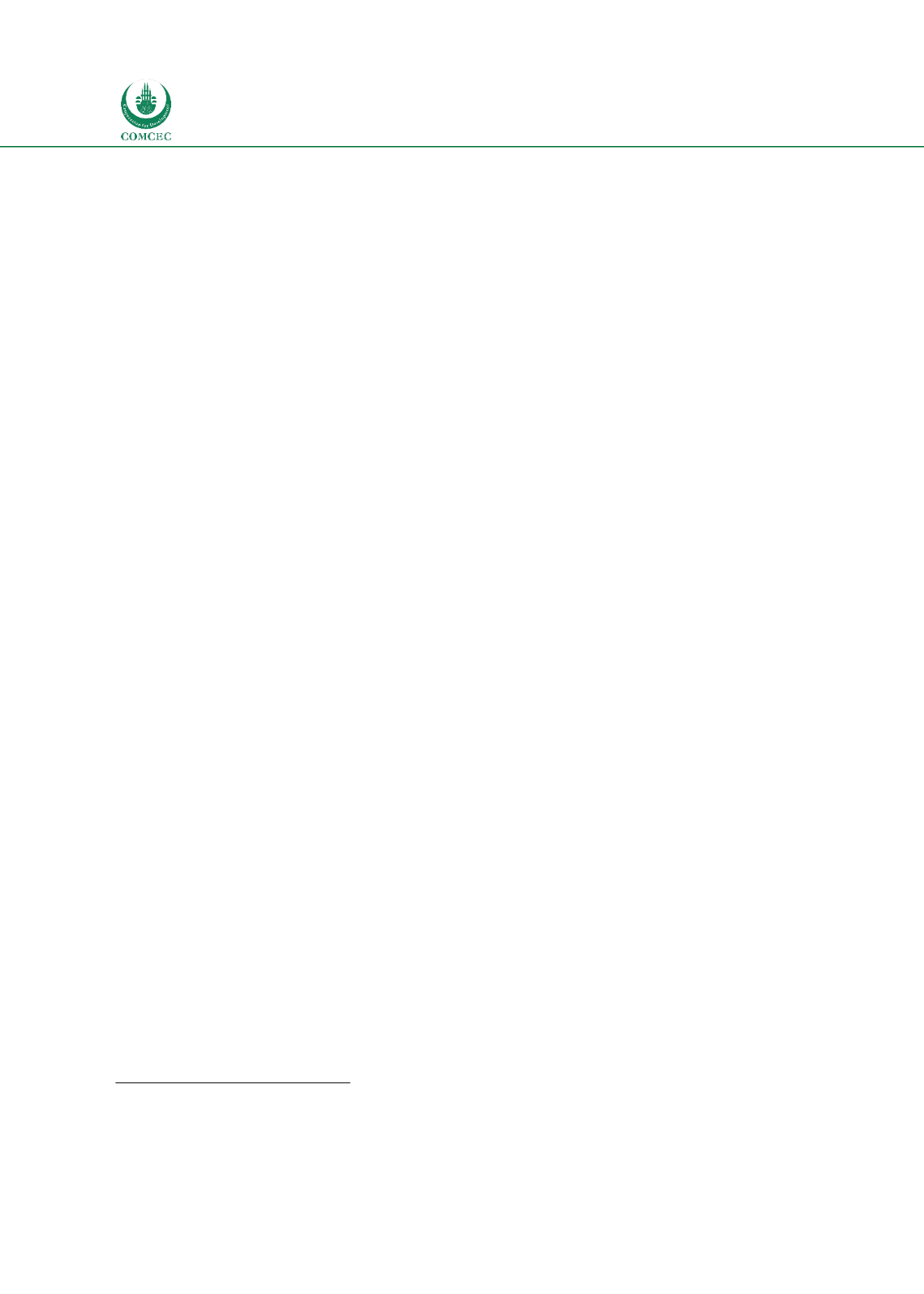

National and Global Islamic Financial Architecture:
Problems and Possible Solutions for the OIC Member Countries
180
a group of GCC investors, with USD500 mn of paid-up capital (MAS 2011 and DBS 2007). In
September 2015, however, DBS announced the decision to close this unit since it was “unable
to achieve economies of scale”(DBS 2015). However, Islamic banking products remain on offer
in Singapore, primarily through Islamic windows operated by Malaysian banks
58
.
Wealth management is another area that fund managers based in Singapore seizing
opportunities to manage funds Islamically. Benefiting from the structuring and fund
management expertise, conventional fund managers are working in partnership with Islamic
financial institutions and Shariah scholars to develop suitable Shariah compliant products and
funds (Ong 2005). While there are possibilities of developing of Islamic hedge funds (an
industry which, in the event, has not taken off, largely for Shari’ah reasons) and Islamic REITs,
no specific steps have been taken. At end of 2014, Singapore had only 5 funds domiciled there,
with an AuM of USD 0.66 bn (Thomson Reuters 2015). Nevertheless, Singapore claims the
world’s largest listed REIT and other real estate funds have launched there, some of them with
a limited time frame. An Islamic ETF was launched in May 2008.
Similarly, in the area of capital markets, given the large investor community in Singapore the
financial centre was host to various Islamic bond roadshows (Ong 2005). In fact, Singapore
has become an important centre for sukuk issuance and listings. In 2009, the government
announced that it had established a facility to issue sukuk (with the provision of regulatory
assets to Islamic banks as a significant motivation), and in that year Singapore became the first
non-Muslim majority country to issue a sovereign sukuk. On a smaller scale, there has been
some innovative use of musharakah sukuk by the body which administers a number of
charitable foundations (awqaf) to fund their development (Goh 2007). By June 2015, 31 sukuk
had been issued in Singapore, and the value outstanding in 2014 reached USD3.8 bn (Loh
2015). However, there was only one, relatively small, issuance in 2015.
As regards Takaful, both Takaful and Retakaful were already available in Singapore and saw
the possibility of Singapore’s becoming a regional base for that activity and for the associated
fund management (omg 2005). To encourage the underwriting of offshore takaful and
retakaful products and services from Singapore, a concessionary 5% tax was introduced with
effect from FY 2008 (Tai 2010). This had an initial 5-year duration and was allowed to lapse in
2013 [Ng 2013]. Although Takaful products were launched by a number of providers, there
appear, from the MAS website, to be no Takaful companies currently authorised in Singapore,
though some Takaful products remain available (e.g. through banks). In 2004, Singapore
licensed its first rated retakaful company, Tokio Marine Retakaful (Tai 2010), but this also has
now left the business, though as part of a more general reorganisation of its reinsurance
activities.
Singapore has undertaken a number of educational initiatives. These have, however, come
from educational and training providers in association with industry players, though MAS has
been supportive of such efforts
59
. The Singapore Islamic Scholars and Religious Teachers
announced in September 2006 that, in order to develop
Asatizah
(religious teachers), it would
introduce a Shariah Advisers Training Programme organized jointly with the Kuala Lumpur-
based International Institute of Islamic Finance (Khan and Bashar 2008). The Singapore
Management University (SMU) operates International Islamic Law and Finance Initiative, and
seeks to carry out research and develop thought leadership in Islamic law and finance, in
58
There are unfortunately no statistics available on either Islamic banking or Takaful in Singapore (Monetary Authority of
Singapore, private communication).
59
Monetary Authority of Singapore, private communication
















